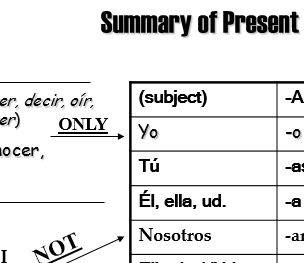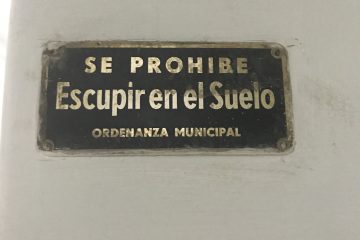It occurs to me that putting resources in blog posts is all well and good, but then months pass and the blog post gets buried, and what if a teacher who just found Musicuentos needed that very resource? So, I’m about to begin releasing resources I’ve developed through a special section of the site. You’ll never guess what the first one is going to be.
Okay, I’ll help you out. It’s verb charts.
Wait, VERB CHARTS?
Sra. MUSICUENTOS BLOGGER USES VERB CHARTS?
I know, I just broke your matrix a little bit.
But for sure, I couldn’t release resources offering you verb charts without explaining how I use them.

When to introduce verb charts
The biggest difference between the me I am now and the me I was when I first started teaching, regarding verb charts anyway, is when my students see them. In my opinion, verb charts aren’t useful in acquisition but they are helpful in refining accuracy. So, my students do not see their first verb chart until their eighth semester of language class. See, I started to notice -and I bet you have too- that my students couldn’t get to an accurate verb conjugation without going through the list. The ones who were good were just better at hiding that they were doing it; they did it in their heads. You’ve seen it, that pause that means the student is thinking, “hablo, hablas, habla” and then comes up with “Ah! Hablamos!” But if my students didn’t know there was such a thing as a verb chart, they wouldn’t have to “count down” so to speak.
In my novice classes, I introduce verb endings as patterns. Not by “regular verbs,” “stem-changing verbs,” “g-verbs,” and so on. Because when students want to talk about what they do in the summer, it makes no communicative sense for me to say “No, you can’t use that word because we haven’t done stem-changing verbs yet.” Rather, my patterns are by subject. We storytell and pattern with the I subject for a while and then quickly add the you so students can ask questions of a classmate. Then we add the we as a reporting tool- I do this, do you do this?, we do this.
By the time my students get to intermediate-mid, however, we’re starting to really focus on developing some accuracy in multiple time frames. At this point, I find it helpful to give them access to an organized picture of how verb endings work. They’re aware enough of the changes and have used the changes enough that the chart becomes a tool for checking themselves, not a tool for how to find the communication in the first place.
How to use verb charts
My other important caveat with verb charts is that I don’t teach them. The chart is a tool for my students to use to check and improve their accuracy, not for me to teach. Why? Because they’re not communication. They’re not comprehensible input. Therefore, they are not a teaching tool in a communicative classroom. So, I pass them out, we spend about 15 minutes looking at the information, and then they go in a notebook for students to use as a reference when they want to. I don’t talk about them again unless I’m asking a student to check something they’ve done.
So please, feel free to download my verb chart resources. But don’t lose sight of the goal of your classroom: to encourage accuracy as a part of communicative competence, not to teach accuracy for the sake of writing the correct letter in the blank.
Update March 1, 2014:
The Simple Verb Pack is now available on the Resource page and through my TeachersPayTeachers store.
9 Comments
Comments are closed.




How can you get your verb chart resources?
Look for the first set -the basic verb pack, including present, sudden past, and descriptive past- to appear in the Resources/Activities section by the beginning of March. (It’s free.)
This is another one of those areas where my philosophy is not yet solid. I get the whole hear-the-pattern-so-often-they-absorb-it approach, and that’s certainly what happens with the L1. However, I’ve pretty much only been using 3 verbs, 3 forms each so far this semester, and visually organizing them in a pseudo semi verb chart caused audible relief for some of my more…detail – oriented students. Also, I’m not entirely clear on why the “counting down” to amos is entirely negative?
I’m not even sure how I feel about helping students visually organize it. It’s such a dilemma for me between how to help students who think they know how school works, and want to organize language the way they organize math, and what I know about developing communicative language. And that’s my hang-up with the “counting down” thing, and why I practice coming up with random numbers with novices at least as much as I practice counting. From an SLA perspective, it’s the difference between “learned” language and “acquired” language. Some researchers would say the one can never become the other, but I’m not convinced that’s true. In any case, such a metalinguistic knowledge, communicatively speaking, is much more useful for checking language than for creating it. Students communicate more smoothly and proficiently when the concept is directly connected with the word in the brain, not when it has to route through not only the English but also all the “conjugations” that come “before” it in the chart.
HTH and let me know if you settle on something, and I’ll let you know if I do. 🙂
Thumbs up!!
[…] you use this resource, please read my post “How I use verb charts,” and in particular, please use them in keeping with the spirit of Musicuentos as a site […]
[…] of having a space for notes on the essential, highest-frequency verbs. This won’t be a set of conjugation charts. I’m not sure what it will look like, but I do know it will look like how people communicate […]
Your ideas are inspirational and have added a new dimension to my teaching methods! I’m moving away from teaching by grammatical concepts but still trying to keep it organized for easy comprehension. I want my students to learn in the most natural way possible, the way they learned English. Thank you for sharing your ideas online! This is something I have also been encouraged to do but I’m not very tech savvy.
Those of you who share online I refer to as my “online and Twitter colleagues”. I feel I have a great PLN!
Thanks for the comment, Angela, and please let me know if you start sharing your journey online! We all have so much to learn from each other and I’d love to hear your ideas on a blog somewhere. 🙂